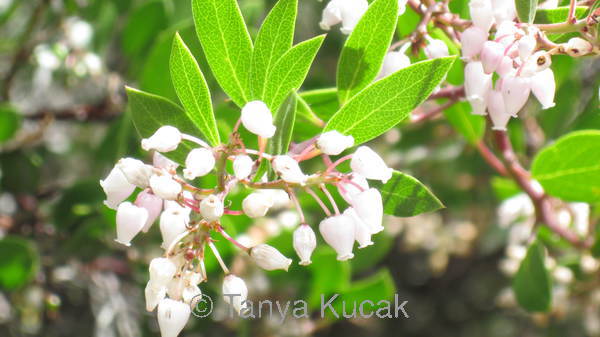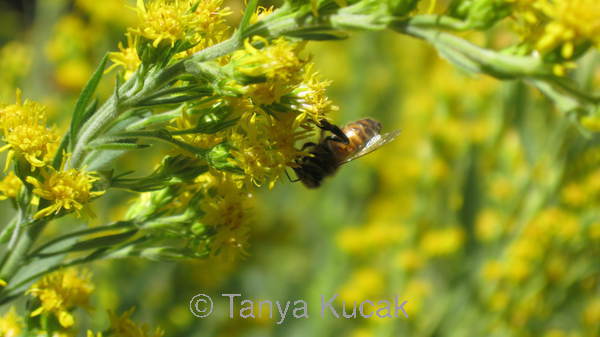
Which natives do the professionals rely on? I asked several local landscape architects and designers to list their favorite 3-5 natives to plant in someone else's yard. These plants won't all be appropriate everywhere, but most suburban native landscapes include quite a few of these. Part 2 will appear next month.
Not surprisingly, a manzanita was on everyone's list.
Dr. Hurd Manzanita (or his hybrid baby brother Austin Griffiths) is landscape designer Deva Luna's choice. It's the quintessential California specimen shrub or small tree, known for its beautiful peeling red bark contrasting with gray-green leaves and winter flowers.
Sentinel Manzanita is landscape designer Agi Kehoe's favorite because it's one of the earliest blooming and most garden-tolerant manzanitas with year-round interest. She likes to prune its lower branches to accentuate the gorgeous mahogany branch structure and underplant it with summer-blooming groundcovers such as Point St. George coast aster and blue-green bunch grasses.
Howard McMinn Manzanita puts on a show when not much else is blooming with an attractive display of bell-shaped flowers in late winter, said landscape architect Stephanie Morris. It looks great in all seasons and makes a great foundation plant. As it gets older, it can be trimmed up to show the reddish bark, she added.
Landscape architect Sherri Osaka also chose Howard McMinn Manzanita for its beautiful blooms in the winter when the hummingbirds really need them. In addition, once established, it's tolerant of garden watering or no watering.
Coffeeberries are nice evergreen shrubs that fit into every landscape and are especially good for screening neighbor's yards, yet they produce beautiful berries for the birds and tolerate a range of watering and sun/shade conditions, Osaka said. She recommended all the popular cultivars: Eve Case, Mound San Bruno, and Leather Leaf.
Yankee Point Ceanothus offers lush, dark green foliage that is attractive year round, with pale blue spring flowers. It spreads 6 to 8 ft. or more and makes a great mass planting for a large space, said Morris.
Kehoe nominated Pink-Flowering Currant, a fast-growing deciduous shrub for dry shade (such as under oaks or along a shady fence) that offers year-round interest with pleasing, light-green fragrant foliage and showy flowers in early spring for the hummingbirds and native bees, edible fruit to share with the birds in summer, and attractive reddish or golden fall foliage. She plants it as a specimen or between shade-tolerant evergreen shrubs such as coffeeberry, toyon, or hollyleaf cherry.
California Goldenrod is invaluable for its showy summer color and provides habitat for butterflies and beneficial insects, Kehoe said. It spreads easily by underground rhizomes to create a large swath, but won't grow too fast if not overwatered.
To contact these landscape professionals and see examples of their work, see their web pages.
Agi Kehoe, http://www.agikehoe.com
Deva Luna, http://www.earthcareland.com/
Stephanie Morris, http://www.nativeplantdesign.com/
Sherri Osaka, http://www.sustainable-landscape.com/

Manzanitas deserve a spot in every garden that has room for a small shrub. Their flowers attract hummingbirds in winter, and their evergreen leaves and reddish bark offer year-round beauty.

California goldenrod fills the garden with a golden glow in summer and fall.

Bees as well as a multitude of other pollinators and beneficial insects are drawn to the tiny flowers of the California goldenrod.
© 2013 Tanya Kucak